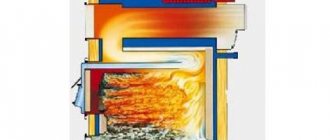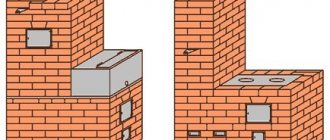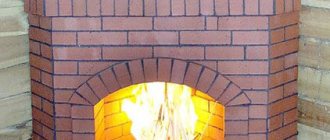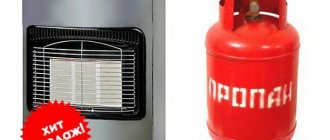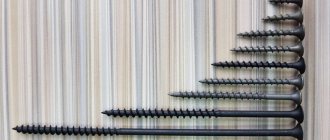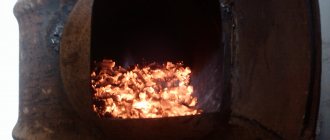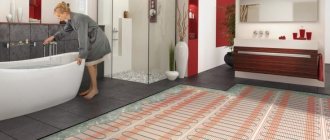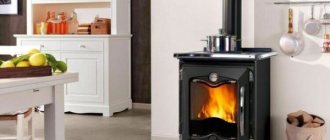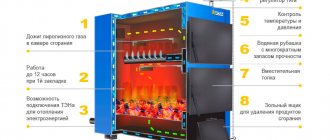Wood stoves continue to be widely used. They are irreplaceable for heating a country house or country house, temporary structures or a residential building as a backup option or even a decorative addition to the selected interior design. Unlike classic wood-burning stoves, where active combustion of fuel occurs in the firebox, long-burning wood-burning home stoves are becoming very popular. This is an extensive group of designs, united by a simple principle, so that the stove works longer on one load of firewood and at the same time produces a consistently high amount of heat.
Design and options
The stove is made of durable and heat-intensive material. It can be cast iron, thick-walled structural steel or brick.
Long-burning stoves are designed to be able to adjust the air supply and provide optimal conditions for maintaining smoldering. For this purpose, the combustion chamber is made voluminous, designed for a large stack. The air supply flap is located on the side of the door. On top of the main combustion chamber there is a gas ignition chamber, from which the chimney pipe directly exits. The chambers are separated by a sheet of metal, and a window between them is formed near the entrance flap.
Most of the firebox volume is located outside the optimal air path from the inlet damper to the chimney.
The inlet damper is solid and is capable of completely blocking the air supply, while the damper on the chimney necessarily has a cutout the size of a quarter of the section, preventing complete blocking.
Convection channels are formed around the firebox, usually with a circular cross-section. They promote active air convection to take heat from the stove and heat the room. Often these ducts are used to connect air ducts to directly heat adjacent rooms.
Diagram of the Buleryan type furnace
The most common models of long-burning stoves for heating a private home are:
- Canadian Buleryan (Domestic analogue - Breneran).
- Ovens with hobs (“Professor Butakov”).
- Heating boilers with a long-burning chamber.
Buleryans attract attention with their rounded shape and the presence of pronounced convection pipes. They are intended for quick heating of any type of room that has a chimney. The design is extremely simple. It is based on a metal cylinder, divided by a horizontal partition into two chambers, the main lower one for storing firewood and the smaller upper one for burning gas. Pipes are welded on the sides with arcs, providing rapid heating of the air due to increased convection.
| WiD 00 | WiD 02 | Novaslav Montreal 02 | Klondike NV-100 | Klondike NV-400 | |
| power, kWt | 6 | 18 | 18 | 6.2 | 19,5 |
| Volume of heated room, m3 | 100 | 400 | 400 | 100 | 400 |
| Efficiency, % | 75 | 75 | 75 | 80 | 80 |
| Weight, kg | 70 | 130 | 127 | 52 | 120 |
| Firebox volume, dm3 | 48 | 142 | 100 | 25 | 100 |
| Operating time on one load, h | 4 | 8 | >8 | 8 | 10 |
| Chimney height, m | 5 | 7 | 7 | 6 | 6 |
Stoves with a hob, as well as decorated stoves for installation in residential premises, have a more familiar rectangular or diamond-shaped appearance. Structurally there are no differences. It is possible to include a grate in the combustion chamber. Often the chimney outlet is carried out vertically without organizing a separate condensate collector. Condensation flows into the upper chamber and burns out. Some models are equipped with transparent doors made of tempered glass. In addition to aesthetics, this makes it much easier to set up a long burning mode by observing the process in the firebox.
| Ermak-Thermo 100C | Ermak-Thermo 300 | Termofor Student | Termofor Professor | Termofor Fire-Battery 9 | |
| power, kWt | 6 | 18 | 9 | 40 | 13 |
| Volume of heated room, m3 | 100 | 300 | 150 | 1000 | 200 |
| Efficiency, % | 80 | 80 | 85 | 85 | 85 |
| Weight, kg | 45 | 80 | 77 | 235 | 62 |
| Firebox depth, mm | 500 | 675 | |||
| Firebox volume, l | 70 | 400 | 62 | ||
| Operating time on one load, h | 12 | 10-12 | 10 | 10 | 10 |
| Chimney height, m | 5 | 7 | 5 | 7 | 7 |
| Door | Glass | Metal | Glass | Glass | Glass |
Heating boilers are distinguished only by the presence of a storage tank with water formed around the main chamber and a chamber for burning gas. The difficulty in making such boilers lies in selecting the optimal operating mode, because when heated, the water takes away a lot of heat, which disrupts the long-term combustion mode. In fact, you have to adjust the dampers each time for different temperature conditions.
Furnace design, its features and operating principle
Before you start making your own stove, you need to carefully study all the characteristics of the device.
If you plan to make a unit for heating a large room, then the stove must have high heat output. For example, for a house or room with an area of 150 m², you should choose a stove designed to heat up to 200 m². This “reserve” of power is necessary to be completely sure that every corner of the house will be warm.
If it is intended to heat a room with an area of 30–50 m², then the stove can be made without the specified “reserve”. In such a small room, heat loss will be minimal, so a unit with low power is sufficient. Automatic fuel refueling will greatly simplify its maintenance. When making such a stove, it is possible to provide hobs for cooking on its body. If the stove is not only a source of heat, but also an interior item, then its body can have windows made of fireproof glass.
Design features of long-burning furnaces
Long-burning heating devices have design features that distinguish them from other stoves:
- the combustion chamber has a volume for loading a large amount of combustible material;
- the body of long-burning stoves is equipped with a large door;
- the combustion compartment in the furnace body is divided into two chambers; one chamber is intended for smoldering flammable material, the second for gas combustion;
- the design of such a stove provides for the presence of a special bumper that prevents flame from entering the chimney;
- This element of the furnace frame is made of a metal plate, which is welded into the upper part of the combustion compartment.
Differences between a conventional and pyrolysis oven
To understand the operating principle of a long-burning stove, you need to compare it with the operation of a conventional stove.
The work of a conventional stove is to heat its surface and transfer heat to the room. The combustion material is ignited from below, causing the flame to spread to the sides, heading upward. This occurs due to the access of a large amount of air into the combustion chamber. The fuel in such a stove burns quickly, which is why the air temperature in the room is unstable - it either drops or rises.
The operating principle of a long-burning furnace is different. The firewood is ignited from above, and the fire spreads downward, while air is supplied only to the burning site. As a result, the material smolders, releasing heat evenly over a long time. In addition to the combustion material, pyrolysis gas is released, which also serves as fuel, additionally creating heat.
In a conventional furnace, fuel burns quickly, in a pyrolysis furnace it smolders slowly
Principle of operation
Stoves for long-term burning of wood are otherwise called gas generators. The combustion process is divided into two main stages: kindling with active combustion of fuel and the main mode with limited access to oxygen, smoldering wood, gas production and combustion.
If you heat firewood or special fuel briquettes made from pressed sawdust to a high temperature, but do not allow them to actively burn, limiting the access of oxygen, then there will no longer be an active flame in the furnace. The wood begins to slowly smolder, and ideally not in its entire volume. Under the influence of high temperature, the release of flammable gas begins, which, when burned, provides the bulk of the heat.
At the first stage, a small volume of firewood is placed in the stove and the inlet damper is opened for direct access of oxygen-rich air, and the outlet damper is opened to maintain an active flame. At this time, the furnace warms up and the overall temperature in the firebox is set.
Next, a large portion of firewood or briquettes is placed into the oven at once, and the damper is closed, almost completely blocking the access of air. In the stove, the air flow is supplied not from below, but from the side or even from above so as to prevent the entire stack of firewood from igniting at the same time. There should only be enough oxygen for slow smoldering.
The firewood warms up and the release of flammable gas begins, which subsequently burns in the upper chamber before exiting into the chimney. To ensure that the gas burns completely, close the damper on the chimney.
One bookmark in a long-burning stove should be enough for 6-10 hours of continuous heat production. This is its main advantage. As a result, the intended use of heat also increases.
Operating principle of a long-burning furnace
In a conventional stove heated with wood, the fuel burns out in two to three hours. The room warms up quickly, but cools down just as quickly after the combustion stops. This means that firewood must be added frequently , which is inconvenient, especially at night. In addition, such a heating device takes oxygen from the room, and part of the heat goes into the chimney. Heating devices with long burning wood are made of cast iron or steel (sheet thickness 3-6 mm). They differ in design from conventional stoves - the firebox is divided into two parts and is more spacious.
Some models have an air convection system or a water heat exchanger. The main feature of these heating devices is the ability to operate in two modes. If it is necessary to quickly heat the room, the damper opens completely, the ash pan extends a few centimeters. The long burning mode is designed to maintain the temperature at the same level.
Firewood burns very slowly, with little oxygen and at a higher temperature than a conventional stove.
Such specific conditions are created by loading a large volume of fuel and limiting the flow of air (closing the damper and blower).
The firewood does not burn, but smolders, and only a small part. The bulk only heats up and forms a flammable “fuel” gas, which subsequently also burns, providing the room with heat. Thanks to this design, the efficiency of a long-burning stove is much higher than that of a conventional one. From each stack of firewood you can get much more heat for quite a long time.
Disadvantages of the stove
Setting the optimal mode of smoldering and gas formation is quite complex and painstaking. It is necessary to get familiar with a specific stove and type of fuel in order to be able to quickly move to the second stage of slow smoldering without consequences.
Incorrect setting is fraught with burning of the entire stack of firewood exceeding the permissible temperature, as well as complete blocking of oxygen, as a result of which the gas will not burn and will escape through the chimney to no avail, increasing the risk of a sudden fire.
During operation, the stove produces a lot of ash and smoke, which quickly clogs the chimney. It is best to provide a collapsible chimney and regularly check its condition and clean it of dirt. The stove in normal operation creates a weak draft, so the condition of the chimney is a key point of safety.
It is prohibited to operate the oven without constant supervision. Changing weather conditions, incorrect combustion settings and coking of the chimney can cause a draft collapse, as a result of which carbon monoxide will quickly fill the room, and flammable gas will provoke an explosion or uncontrolled fire.
With water circuit
The ability of a long-burning stove to maintain a constant temperature in the firebox is ideal for including a water circuit in one of the firebox chambers. In another design, the water circuit pipes are located around the entire firebox, occupying part of the convection heat exchangers on the outside.
Ermak-Thermo 350-AQUA with water circuit
A long-burning heating boiler will provide continuous heating of the coolant for a long time without the need to regularly add firewood. Due to precise regulation of the process of smoldering and combustion of gases, the efficiency of the furnace reaches 85% and it is possible to smoothly regulate the temperature in the boiler.
However, installing a water circuit in a long-term storage oven that is not directly intended for this purpose can lead to disruption of its operation. The water circuit removes heat from the gas combustion chamber, and it does not burn out completely.
Materials and tools
To make a long-burning furnace, you will need rolled steel. The ideal option is to make blanks from heat-resistant steel with additions of molybdenum and chromium. As an example, we can cite brands 12Х1МФ and 12ХМ. But you should be prepared for the fact that this material is quite expensive.
If increasing the cost of a homemade “long-lasting” furnace is not part of your plans, use ordinary structural steel. It costs much less than alloyed one, you just need to choose the right brand. The most durable homemade heat generators are made from Steel 20 (withstand 15 years of operation). But you can also use other low-carbon grades - Steel 10, St. 3, etc. Grades with a higher carbon content - from grade "Steel 35" and higher - are hardened when exposed to high temperatures. As a result, they become brittle and are therefore not suitable for making ovens.
Everything is clear with the materials, now let’s look at the specific types of rental products that we will need:
- Sheets 3 and 4 mm thick (for the manufacture of firebox and heat exchanger).
- Sheets 0.3–0.5 mm thick with colored polymer coating (cladding).
- Equal corner 50x4 mm (needed for making a grate).
- Pipe with a diameter of 50 mm (we will make heat exchanger pipes and flame pipes from it).
- A pipe with a diameter of 150 mm is for the smoke exhaust pipe.
- Rectangular pipe 60x40 mm (air duct).
- Strip 20x3 mm.
In addition, you will need the following materials and products:
- 20 mm basalt wool with a density of 100 kg/m3;
- handles and hinges for doors;
- asbestos cord (used as a sealant).
The structure will be welded, so the home craftsman should arm himself with a welding machine. You can use electrodes of the MP-3C or ANO-21 brands. You will also need a grinder and a drill with a set of metal drills. Everything else is tools for ordinary plumbing work and a tape measure with a pencil.
With hob
Models of long-burning stoves, intended primarily for heating residential premises, are equipped with a hob. A flat surface made of thick sheet metal on top of a stove, which is used for heating and cooking food.
Diagram of a Butakov home stove with a hob
The hob has no adjustments as such. The temperature depends on the intensity of gas combustion in the upper chamber of the stove. In some models, an additional damper reduces the temperature of the hob, isolating it from the gas combustion chamber.
Cast iron
Furnaces for stationary installation are made of cast iron. Thanks to the resistance of the material and its durability, the stove will last up to 50 years without breaking or burning through the walls. In addition, cast iron is a heat-intensive material and maintains the set temperature in the firebox for a long time, which stabilizes the combustion regime.
A natural disadvantage of cast iron stoves is their enormous weight. They are installed permanently and always on a prepared base in the form of a concrete foundation. To protect surrounding structures, the distances recommended by the manufacturer should be followed.
The distance to a wooden wall should be at least 1.2 meters, to walls made of non-combustible materials at least 35 cm.
Made of brick
The principle of laying a long-burning brick stove is the same as that of a conventional, fast-burning stove. The combustion chamber is built with a larger volume, and a gas combustion chamber is added on top. Many stoves already have a coil leading to a chimney to improve heat transfer, which just needs to be slightly modified and prepared for gas combustion.
Laying a long-burning stove out of brick is considered not the best idea. The abundance of ash and resins, the rapid coking of brick walls due to their roughness, require frequent cleaning. In this case, metal walls are more reliable; they are mostly self-cleaning by pyrolysis. Under the same conditions, due to the porosity of the surface, brick becomes covered with a layer of soot, which is almost impossible to remove without the use of hard abrasives.
How to choose and what to pay attention to?
When choosing a long-burning fireplace stove, you should pay close attention to the following circumstances:
- Availability of fuel and its cost . If there are accessible sawmills or other sources of carpentry waste near your place of residence, you should pay attention to models that burn wood. If coal or peat resources are available, stoves designed to consume this type of fuel will be suitable.
- Material used for the production of the case . This factor will significantly affect both the price of the fireplace stove and the heat transfer performance. In addition, the service life of the entire structure largely depends on the quality of the housing. The body can be made of steel, ceramic material or cast iron. The last option is considered the most optimal.
- Power characteristics . They are selected depending on the area that needs to be heated in the ratio of 1000 W for every 10 m2 (with a ceiling height of 2.5 to 2.8 m) + 15-20%.
- Weight . The weight of a cast iron fireplace stove will exceed that of a steel product by about 1/5. If the house has already been renovated and the site for installing the stove has not been reinforced in advance, you should choose a steel product.
